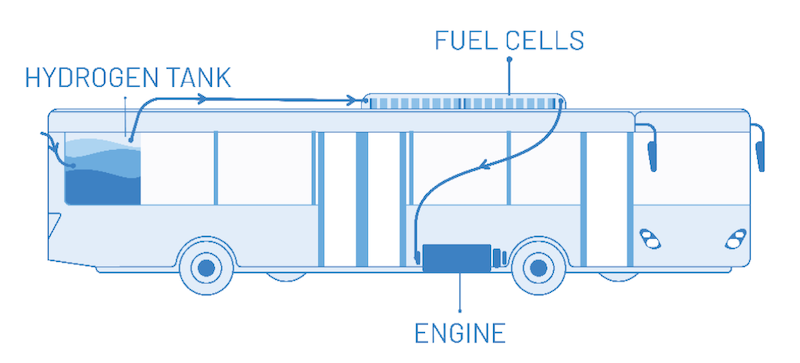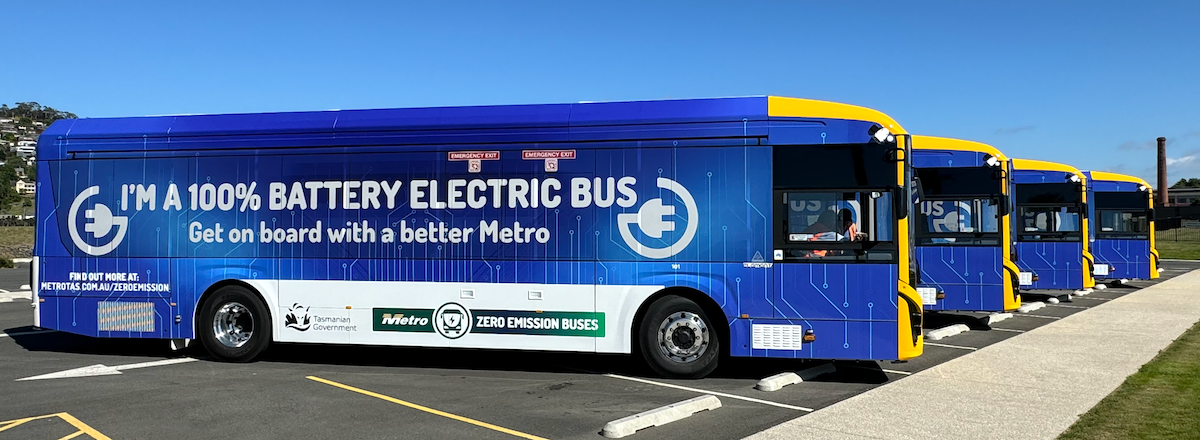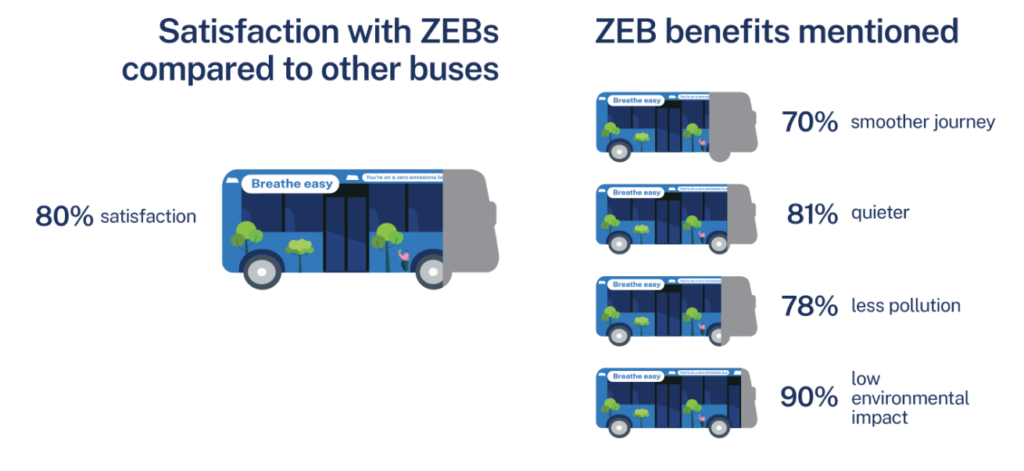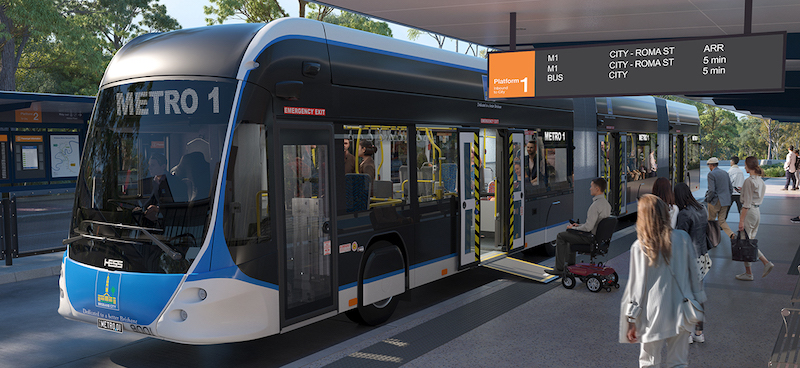What’s the trial?
Metro Tasmania is trialing seven electric buses in Hobart & Launceston.
Three fuel cell electric buses in Hobart:
- The electric buses in Hobart have a refillable tank containing hydrogen. The hydrogen is combined with oxygen in the air in the fuel cell on the bus. This makes electricity to power the motor. Water vapour is the only emission.
- The hydrogen will be made in Tasmania using renewable energy. The buses will be refuelled daily at the Mornington depot.
- The trial in Hobart started on 8 August 2025 and will go for two years. It was originally scheduled to go for three years from mid 2024.

Four battery electric buses in Launceston:
- The electric buses in Launceston have an onboard battery to power the motor. The battery will be charged using power from the electricity grid. The battery should last all day so the buses will be plugged into chargers at the Launceston depot each night.
- The standard Element bus has a 500 km typical range, 378 kWh battery, carries 45 passengers and has a full low floor design for maximum accessibility.
- The trial in Launceston started on 25 January 2024. They’re operating on a range of routes for two years.

Any safety issues?
- Electric motors are quiet. Like electric cars the buses will make an artificial sound to ensure pedestrians can hear them.
- Vehicle batteries rarely catch fire but can be difficult to put out when they do. The buses won’t be significantly different to electric cars in this regard.
- Hydrogen is non-toxic and dissipates rapidly when it leaks. However it’s also easier to ignite than natural gas and burns with a near invisible flame. Safety processes have improved a lot since the Hindenburg though.
Where else is using electric buses?
Two of the SkyBus buses that travel between Hobart Airport and the city have been battery electric since May 2022. SkyBus is also using these buses in Melbourne, Queensland & New Zealand.

Canberra already has 16 battery electric buses with 90 more coming in the next three years.
Sydney has lots of battery electric buses — there will be 200 in 2024. Passengers have liked them →
There’s also a trial of hydrogen-powered fuel cell electric buses on the NSW Central Coast.

And Brisbane is getting the Brisbane Metro which is about as light rail as buses can get. The 60 Metro battery electric buses can carry up to 170 people. As well as the usual overnight charging, they can be flash charged in under six minutes at the end of the route.

Our thoughts
The good
So obviously these electric buses don’t produce greenhouse gas emissions directly. Plus in Tassie most of the electricity and hydrogen used to power them will be generated using renewable sources. Given buses alone are responsible for over 6% of Tasmania’s emissions that’s a big deal. 1

There’s also a number of other benefits to electric buses:
- They’re much quieter. More pleasant rides for passengers. More peaceful streets for everyone.
- Like electric cars, these buses are likely to be cheaper to run and maintain. Costs won’t be subject to global oil price fluctuations.
- Increasing electrification in Tassie contributes towards the business case for a local green hydrogen industry, not to mention Marinus Link.
- If they’re anything like electric cars, they’ll be nicer to drive — who doesn’t love their e-pedal?
The less good
- Hard to find things to improve to be honest. Maybe could happen faster?
More info
Zero Emissions Bus Trial — Metro Tasmania
Metro Tas announcement of hydrogen bus trial commencement
Zero Emission Bus Trial Bulletins:
- Overview
- How battery electric buses work
- Charging battery electric buses
- How fuel cell electric buses work
- Refuelling fuel cell electric buses
- Safety
- Battery electric bus trial update
Element electric bus — Custom Denning
- Tasmania’s Greenhouse Gas Emissions — Renewables, Climate and Future Industries Tasmania ↩︎
Hi folks. The graphic of the Fuel Cell bus is misleading. The Foton buses that Metro has, and nearly every fuel cell bus available to buy, has the tanks on the roof, the fuel cell in the back (where the internal combustion engine would normally be), the electric motor at the rear axle and the batteries under the floor. The tanks are on the roof as hydrogen, should it leak, tends to go up as it is lighter than air. Here is a better graphic you may be able to use: https://www.researchgate.net/figure/Components-of-fuel-cell-bus-87_fig7_347984760